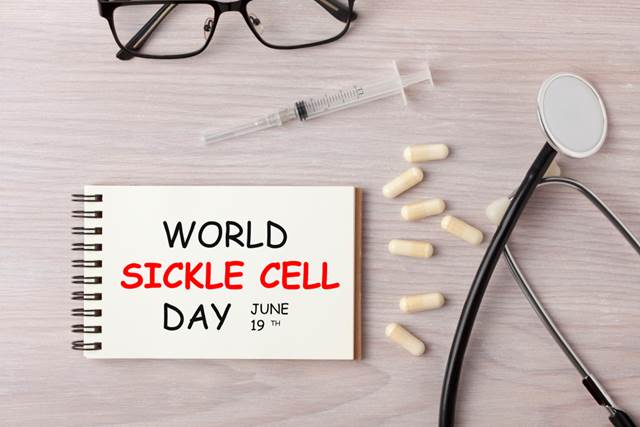World Sickle Cell Day
6/19/2018

World Sickle Cell Day is celebrated each year on June 19. The UNESCO and World Health Organization recognize sickle cell disease, also known as sickle cell anemia, as a public health priority.
Sickle cell disease is the most frequent genetic disease worldwide. It’s estimated that 500,000 people are born each year with this condition and that 50 percent of those people will die before their 5th birthday. SCD affects black populations from African origin as well as Arabic, Indian and Caucasian populations from Southern Europe. More than 100,000 people in the United States and millions more worldwide have sickle cell disease. Sickle cell is an inherited disorder that must be passed on through both parents. Genetic screening in populations that carry the disease can help determine the likelihood of passing sickle cell disease on to children.
Sickle cell disease is an inherited form of anemia, which is a condition in which there aren't enough healthy red blood cells to carry adequate oxygen through the body. Normally, red blood cells are round and able to travel easily through the blood vessels. In sickle cell anemia, the red blood cells become rigid and sticky and are shaped like sickles or crescent moons. These “sickled” cells can get stuck in small blood vessels. This can slow or even block bloodflow and oxygen to the organs.
Forty-one states and the District of Columbia provide universal newborn screening for sickle cell disease.1 Three states target screening to infants of high-risk ethnic groups. Early detection, diagnosis, and treatment of newborn diseases are critically important. Timely newborn screening can prevent death and improve patient care outcomes. CLSI newborn screening laboratory standards provide test collection instructions, as well as information on methods for the detection of metabolic and hereditary disorders.
1. AAP Newborn Screening Taskforce. Serving the family from birth to the medical home: Newborn screening: A blueprint for the future. 106 (2 Pt 2):389-422; 2000.
